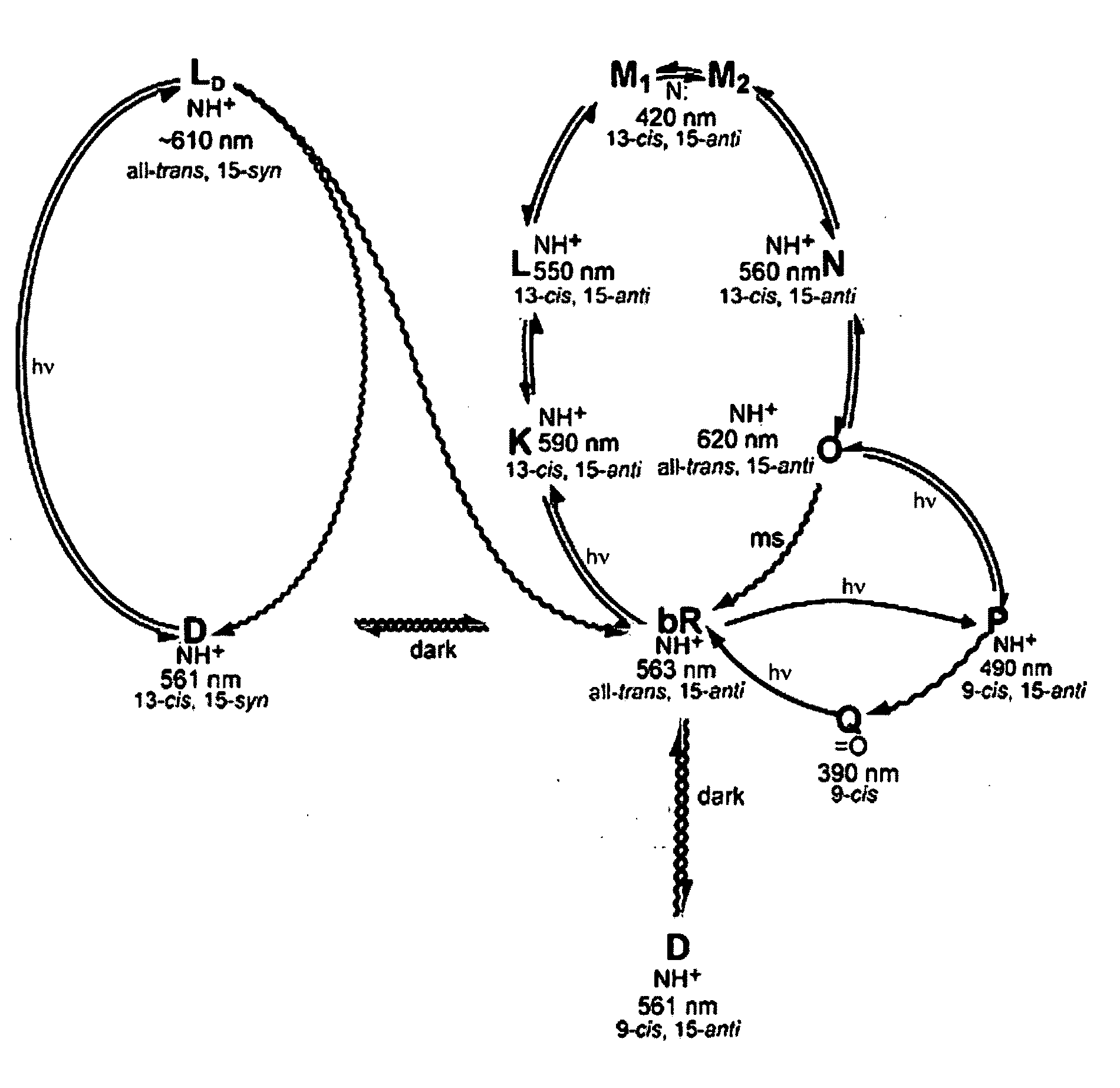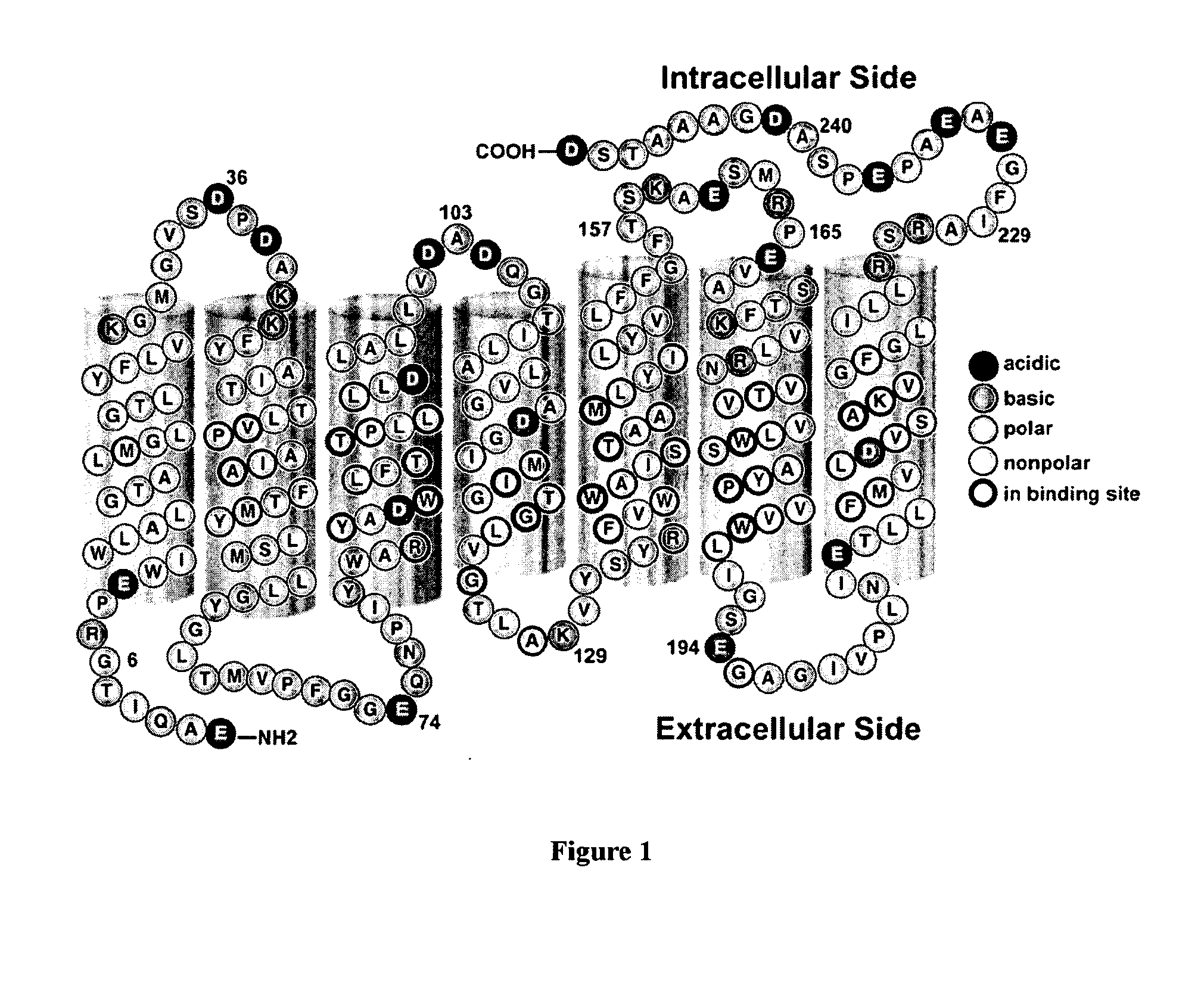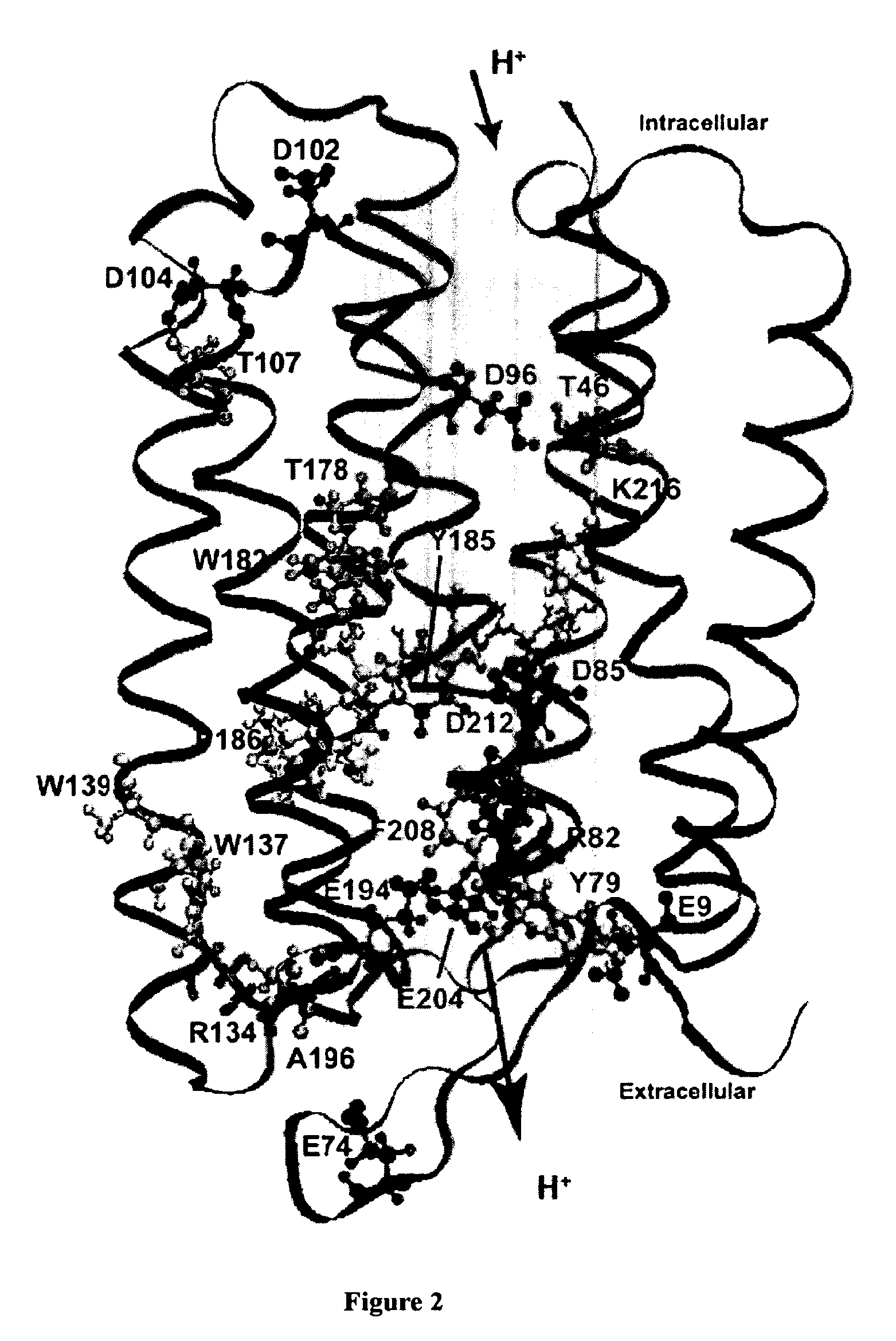Bacteriorhodopsin Protein Variants and Methods of Use for Long Term Data Storage
- Summary
- Abstract
- Description
- Claims
- Application Information
AI Technical Summary
Benefits of technology
Problems solved by technology
Method used
Image
Examples
Embodiment Construction
[0022]Bacteriorhodopsin variants and methods using the variants for performance in holographic and three-dimensional (3D) memory storage devices are described. The genetic and chemical modifications of bacteriorhodopsin described herein provide greatly enhanced protein performance. The genetically modified bacteriorhodopsin-based memory devices provided herein write, read and erase data proficiently.
[0023]Bacteriorhodopsin is a membrane-bound light-transducing protein that functions as a proton pump in the archaeon Halobacterium salinarum (previously known as Halobacterium halobium or Halobacterium salinarium). H. salinarum has adapted to high salt environments (5 M or 25% NaCl) and can use bacteriorhodopsin to absorb light energy and convert it to chemical energy. In response to low oxygen availability, H. salinarum produces a purple membrane, in which thousands of bacteriorhodopsin trimers are assembled in a 2D hexagonal lattice. Although bacteriorhodopsin is crucial for long-term...
PUM
| Property | Measurement | Unit |
|---|---|---|
| Sensitivity | aaaaa | aaaaa |
| Wavelength | aaaaa | aaaaa |
Abstract
Description
Claims
Application Information
 Login to View More
Login to View More - R&D
- Intellectual Property
- Life Sciences
- Materials
- Tech Scout
- Unparalleled Data Quality
- Higher Quality Content
- 60% Fewer Hallucinations
Browse by: Latest US Patents, China's latest patents, Technical Efficacy Thesaurus, Application Domain, Technology Topic, Popular Technical Reports.
© 2025 PatSnap. All rights reserved.Legal|Privacy policy|Modern Slavery Act Transparency Statement|Sitemap|About US| Contact US: help@patsnap.com



